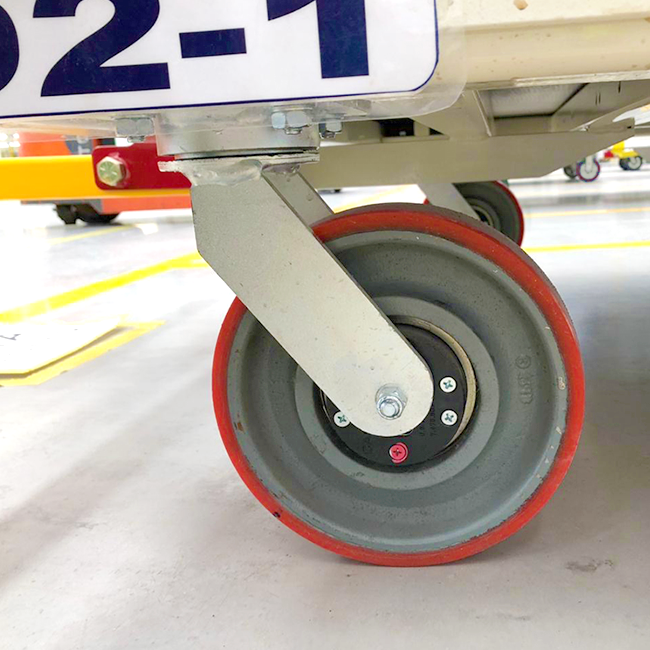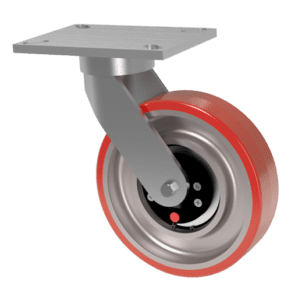

In this article, we will cover what aspects of the caster can help with noise and what can make it worse.
First, consider the costly effects of noise on workers’ health. According to the Centers for Disease Control and Prevention, 75.0 percent of civilian jobs were exposed to moderate noise levels at work in 2016 with another 13.3 percent exposed to loud noise levels.
And the negative effects of noisy plants are worse than they sound. Noise exposure causes hearing loss, tinnitus (a ringing, hissing, or booming sensation in your ears), hypertension, and other adverse effects. Chronic noise exposure can lead to sleep disturbances and an increased incidence of diabetes.
Armed with these facts, it is always concerning when customers come to us because their casters or carts are too noisy. It’s a problem that affects the entire workplace, leading to decreased productivity and health while increasing hearing-related accidents among employees.
While it can be hard to control noise in some areas of the workplace, there are several things you can do with your casters to reduce the overall noise in your plant.

While earplugs and earmuffs are common ways to manage exposure to cart noise, you really need to control the problem at the source. A vibrating cart equates to lots of noise. Depending on your needs and the level of noise reduction needed, you have a variety of options to reduce this vibration and sometimes even reduce shock load.
Option one: you can use a soft polyurethane wheel such as ET-85 which rolls easily and quietly and is ideal for applications that require industrial-strength performance with a softer touch. This tread will help cushion your ride and absorb some impact during the process of moving your loads.
Option two: You can go with a spring-loaded caster. They are great for applications where the load may be fragile or highly reactive to vibration, such as small parts or glass. This will give the entire load the ability to transfer the shock into the caster itself and reduce the noise.
Option three: CasterShox®. This is a caster that has a spring built into the wheel itself and can reduce noise by up to 50%. CasterShoX Casters function similarly to conventional spring-loaded casters but combine the benefits of spring technology and polymer dampening technology that dampen the noise while reducing shock load.
Option four: You can also use a cart that has a softer surface which helps to deaden noise and reduce the vibration of the materials you are carrying.
Ultimately this is usually a case-by-case scenario, but I hope this helps give you some direction when trying to decrease the noise.